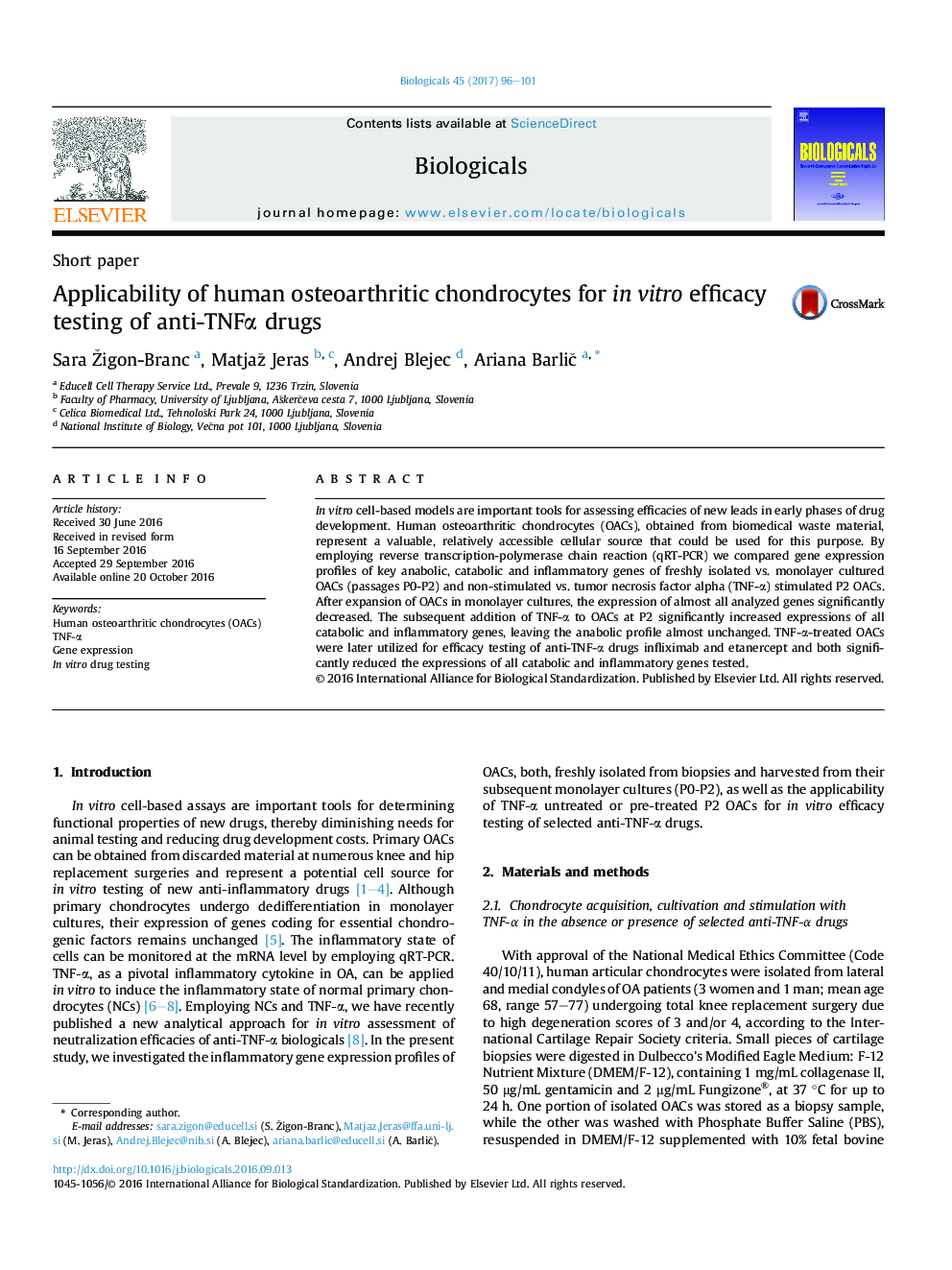| Article ID | Journal | Published Year | Pages | File Type |
|---|---|---|---|---|
| 5517094 | Biologicals | 2017 | 6 Pages |
In vitro cell-based models are important tools for assessing efficacies of new leads in early phases of drug development. Human osteoarthritic chondrocytes (OACs), obtained from biomedical waste material, represent a valuable, relatively accessible cellular source that could be used for this purpose. By employing reverse transcription-polymerase chain reaction (qRT-PCR) we compared gene expression profiles of key anabolic, catabolic and inflammatory genes of freshly isolated vs. monolayer cultured OACs (passages P0-P2) and non-stimulated vs. tumor necrosis factor alpha (TNF-α) stimulated P2 OACs. After expansion of OACs in monolayer cultures, the expression of almost all analyzed genes significantly decreased. The subsequent addition of TNF-α to OACs at P2 significantly increased expressions of all catabolic and inflammatory genes, leaving the anabolic profile almost unchanged. TNF-α-treated OACs were later utilized for efficacy testing of anti-TNF-α drugs infliximab and etanercept and both significantly reduced the expressions of all catabolic and inflammatory genes tested.
